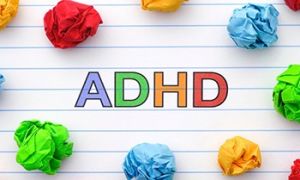Tantrums can be intense, unpredictable, and emotionally draining for both children and adults. But beneath the noise and tears lies something deeper: a child overwhelmed by emotion, struggling to communicate what they feel. In early childhood education and care, how we respond to these moments shapes not just behavior but also emotional literacy, trust, and long-term well-being.
What Is a Tantrum, Really?
A tantrum isn’t a power play—it’s a release. Young children often lack the language, regulation skills, or neurological maturity to process frustration, disappointment, or overstimulation. What looks like defiance may actually be distress.
As one educator wisely put it, “They’re not giving you a hard time—they’re having a hard time.”
Why “No” Isn’t Always Enough
While boundaries are essential, a sharp “no” during a tantrum can escalate the situation. It may feel dismissive, confusing, or even unsafe to a child in emotional overload. Instead, emotionally intelligent responses help children feel seen and soothed.
Strategies That Support, Not Suppress
Here are trauma-informed, emotionally intelligent ways to support children through tantrums:
| Strategy | What It Looks Like | Why It Helps |
|---|---|---|
| Stay listening | Sit nearby, offer calm presence, and allow feelings to flow | Builds trust and emotional safety |
| Name the feeling | “You’re really upset right now. I’m here.” | Helps children develop emotional vocabulary |
| Offer containment | “Let’s take a break together. You’re safe.” | Supports regulation without shame |
| Avoid labeling | Use “big feelings” instead of “tantrum” | Reduces stigma and invites empathy |
| Validate, then redirect | “It’s okay to feel angry. Let’s find a way to help.” | Balances emotional support with guidance |
Tactile Tools for Emotional Processing
To reinforce these strategies, educators can use:
- Velcro-backed emotion cards: Children can choose and stick how they feel onto visual planners.
- Symbolic reflection sheets: Use monsters, weather, or Halloween motifs to help children express emotional states.
- Safe space visuals: Create calming zones with symbolic imagery (e.g., clouds, lanterns, cozy corners).
These tools make emotional literacy tangible, especially for children with additional needs or language delays.
Tantrums aren’t failures; they’re invitations. When educators respond with empathy, clarity, and emotional intelligence, they transform chaos into connection. And in doing so, they help children build the skills they’ll need for a lifetime of emotional resilience.
Further Reading
Dealing With Tantrums
Reset Activities For Children After A Tantrum Or Meltdown
Critical Reflection Questions For A Child's Challenging Behaviour
Strategies To Comfort A Crying Toddler
Connection Over Control: Gentle Strategies for Supporting Toddlers
How To Handle Big Feelings
Learning About Feelings Posters







 Working as a childcare professional can be a challenge especially when dealing with behavioural problems which may arise. The techniques we use when dealing with
Working as a childcare professional can be a challenge especially when dealing with behavioural problems which may arise. The techniques we use when dealing with There are different types of behaviour that children can display and sometimes it can be hard to manage, especially if a child is having behavioural
There are different types of behaviour that children can display and sometimes it can be hard to manage, especially if a child is having behavioural As a parent, your behavioural expectations of your child can be higher than what is actually developmentally appropriate for your child's age.
As a parent, your behavioural expectations of your child can be higher than what is actually developmentally appropriate for your child's age.
 As Educators, there will be many instances where you will need to write about a child's behaviour. For a behaviour management plan, assessments, half-yearly or
As Educators, there will be many instances where you will need to write about a child's behaviour. For a behaviour management plan, assessments, half-yearly or As Educators when communicating with Parents (through verbal or non-verbal communication), there will be times where we need to discuss issues or concerns that may
As Educators when communicating with Parents (through verbal or non-verbal communication), there will be times where we need to discuss issues or concerns that may Challenging Behaviour is when a child does something that hurts themselves and/or other people.
Challenging Behaviour is when a child does something that hurts themselves and/or other people.
 As part of your child's development it is normal for your child to have anxiety and fears. A baby commonly shows a fearful sign to
As part of your child's development it is normal for your child to have anxiety and fears. A baby commonly shows a fearful sign to It's always difficult to bring up behavioural issues with parents, it can be nerve wrecking to tell a parent that their child misbehaves but that
It's always difficult to bring up behavioural issues with parents, it can be nerve wrecking to tell a parent that their child misbehaves but that All children deal with anger on a daily basis. Thinking about it as a child, there is a lot to be angry about. Elder people
All children deal with anger on a daily basis. Thinking about it as a child, there is a lot to be angry about. Elder people It is important to understand that your child behaviour problems could not just be from attention seeking. There are many factors to take into consideration
It is important to understand that your child behaviour problems could not just be from attention seeking. There are many factors to take into consideration


